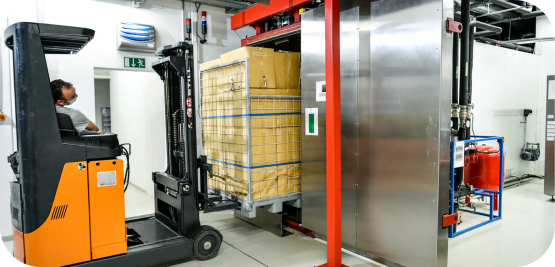(Download: Mixed Load Cycles: Optimizing Sterilization Efficiency in PDF by Medistri)
At Medistri, we help healthcare and pharmaceutical manufacturers ensure the sterility of their products through validated processes that combine efficiency with the highest standards of safety.
For small Medical Device manufacturers, mixed Load Cycles is one of these approaches, allowing different types of instruments and materials to be sterilized together within a single cycle.
This method not only reduces processing time but also ensures that critical equipment is available when needed, supporting both operational efficiency and patient safety.
What Are Mixed Load Cycles?
Unlike traditional cycles designed for a single type of load, Mixed Load Cycles accommodate a variety of instruments and materials in the same chamber. Medical Devices, Surgical instruments, and selected plastics, for example, can be sterilized together, provided the process is properly validated to meet stringent regulatory requirements.
By enabling flexibility in load configuration, Mixed Load Cycles help optimize resources and minimize downtime in manufacturing, and healthcare supply chains.
Validation & Compliance
Mixed Load Cycles must be meticulously developed and validated to ensure compatibility between materials and to guarantee uniform sterilization across the entire load. This requires advanced equipment capable of adjusting parameters such as temperature, pressure, and cycle duration.
Regulatory frameworks provide the foundation for this validation:
- ISO 11135: Sterilization of healthcare products, EO: requirements for development, validation, and routine control of EO sterilization processes.
The standards ensure that sterilization cycles, whether moist heat or EO, are performed with reproducible, documented evidence of sterility.
Mixed vs. Unique Load Cycles
While Mixed Load Cycles bring efficiency by grouping different materials together, Single Load Cycles are essential for items requiring highly specific conditions.
Both approaches, when validated, ensure compliance and safeguard the performance of medical devices.
Medistri’s Expertise
Our sterilization facility combines state-of-the-art infrastructure with a validated framework for Mixed Load Cycles. Medistri’s team supports you in developing sterilization strategies that reduce downtime, optimize workflows, and meet international regulatory requirements, ensuring that your devices reach patients safely and on time.
Learn more about Mixed Load Cycles on our website here or contact our team at contact@medistri.com.
— The Medistri Team
#Medistri
1. What are Mixed Load Cycles in sterilization?
Mixed Load Cycles allow different types of medical devices and materials to be sterilized together in the same chamber. This approach increases flexibility while maintaining validated sterility standards across all items in the load.
2. Why are Mixed Load Cycles important for manufacturers?
They save time and resources by reducing the need for multiple separate sterilization runs. This helps ensure that critical equipment remains available, improving both operational efficiency and patient safety.
3. How are Mixed Load Cycles validated for compliance?
Validation involves testing compatibility between materials and confirming that sterilization parameters achieve uniform results throughout the load. International standards such as ISO 11135 provide the framework to ensure reproducibility and regulatory acceptance.
4. When should Single Load Cycles be chosen instead of Mixed Load Cycles?
Single Load Cycles are necessary when specific materials or devices require tightly controlled conditions that cannot be shared with other items. This approach ensures that sensitive products are sterilized under their optimal parameters.
5. How does Medistri support manufacturers with Mixed Load Cycles?
Medistri develops validated strategies that integrate Mixed Load Cycles into sterilization workflows, aligning with international standards. By combining advanced infrastructure and regulatory expertise, Medistri helps manufacturers reduce downtime while ensuring device safety and compliance.
